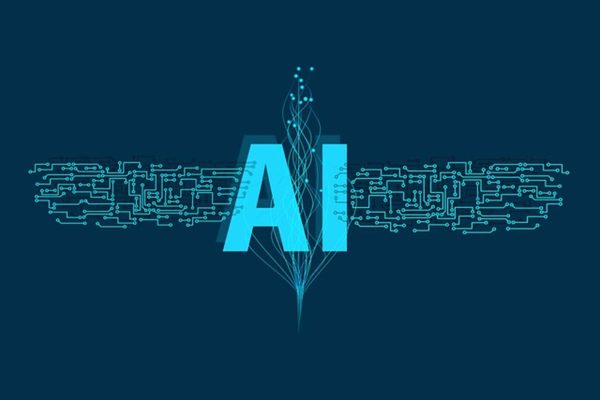As financial data becomes increasingly vulnerable in today’s digital world, securing sensitive information has become more important than ever. Cyber threats are rapidly evolving, targeting businesses with sophisticated methods. The shift to telecommuting has only amplified these risks, with remote desktop attacks surging by 768% in 2020 during the height of the pandemic.
Amid these challenges, artificial intelligence (AI) is emerging as a vital tool to help safeguard financial data, offering more comprehensive protection in a landscape of growing cyber threats.

Common Financial Data Threats
As cyber threats become more advanced, businesses face several key vulnerabilities that put their financial data at risk. This section outlines some of the primary security threats and the unique challenges posed by remote work.
1. Primary security risks
Financial data is highly susceptible to various security risks that can compromise sensitive information:
- Phishing emails: Attackers use spoofed emails to steal credentials by posing as legitimate entities.
- Weak encryption: Insufficient encryption leaves data vulnerable during both transit and storage.
- System misconfigurations: Improper system setups can create loopholes, allowing backdoor access.
- Ransomware: Malicious software that locks essential business assets until payment is made.
2. Remote work vulnerabilities
The rise of telecommuting has introduced new risks that challenge financial data security:
- Unsecured networks: Home or public Wi-Fi lacks the protections of office networks.
- Device risks: Increased chances of theft or loss when employees work outside the office.
- Reduced physical security: No access controls or on-site security personnel to manage threats.
- Employee errors: Human mistakes are more likely when employees work outside secure office environments.
AI’s Role in Protection
Artificial intelligence is revolutionizing financial data security by automating processes and offering advanced protection against evolving cyber threats.
1. Automated security features
AI-powered security systems provide continuous, 24/7 monitoring, scanning for potential threats without requiring human intervention. These systems use machine learning algorithms to identify suspicious behavior by analyzing patterns and anomalies in real-time. Once a threat is detected, AI can instantly respond by isolating the issue and preventing it from spreading further.
In addition to responding to active threats, AI performs automated analyses of security breaches, helping companies gain insights into their vulnerabilities. This proactive approach enables businesses to adjust their defenses and anticipate future attacks, keeping their data safe from increasingly sophisticated cybercriminals.

2. Enhanced protection systems
AI doesn’t just detect threats — it also significantly enhances overall protection. Advanced encryption methods, powered by artificial intelligence, continuously adapt to emerging risks, ensuring that sensitive financial data always remains secure. AI-based regulatory reporting tools assist businesses in complying with complex industry regulations, which helps minimize the risk of costly penalties for non-compliance.
Furthermore, AI systems can automatically apply critical software updates, quickly patching any vulnerabilities before they can be exploited by malicious hackers. Through predictive analysis, AI can identify potential weak points in security, allowing companies to proactively strengthen defenses before threats arise.
Best Practices Implementation
While AI offers powerful tools for financial data protection, relying solely on automation is insufficient. A comprehensive security strategy must include active participation from employees and management to maximize defenses.
1. Employee security protocols
To boost the effectiveness of AI-driven security systems, it’s essential to implement strong employee security protocols. These measures ensure that human actions don’t compromise the advanced technology protecting your financial data:
- VPN usage: Ensure all employees use encrypted VPNs for remote connections, securing data transmission.
- Password management: Implement password management tools and enforce regular updates to prevent compromised credentials.
- Device security: Mandate the use of device locks and encryption to safeguard sensitive data on laptops and mobile devices.
- Phishing awareness: Provide regular training to help employees recognize phishing attempts and other social engineering threats.
- Principle of least privilege: Limit access to sensitive financial data on a need-to-know basis, reducing the risk of insider threats.
2. System security measures
To complement employee protocols, implementing robust system security measures is crucial for maintaining the integrity of your financial data and ensuring comprehensive protection across all layers of your infrastructure:
- Automated security audits: Schedule regular automated audits to identify vulnerabilities and ensure compliance with security protocols.
- Multi-layer protection: Use multiple layers of protection, such as firewalls, antivirus software and intrusion detection systems to defend against various threats.
- Access control hierarchies: Implement strict access control measures, ensuring only authorized personnel can access sensitive information.
- Data backup and recovery: Establish regular backup procedures and a robust recovery plan to safeguard critical data in case of an attack or data loss.

Conclusion
AI technology is continually evolving to address the growing complexity of cyber threats. However, relying solely on artificial intelligence is not enough. The combination of AI and human oversight is crucial for building a robust security framework that protects sensitive financial data and strengthens overall cybersecurity efforts.
For businesses, staying current with AI-driven security advancements and employee training is essential. A proactive approach to data protection, integrating both technological solutions and human efforts, ensures the best defense against emerging cyber risks.
